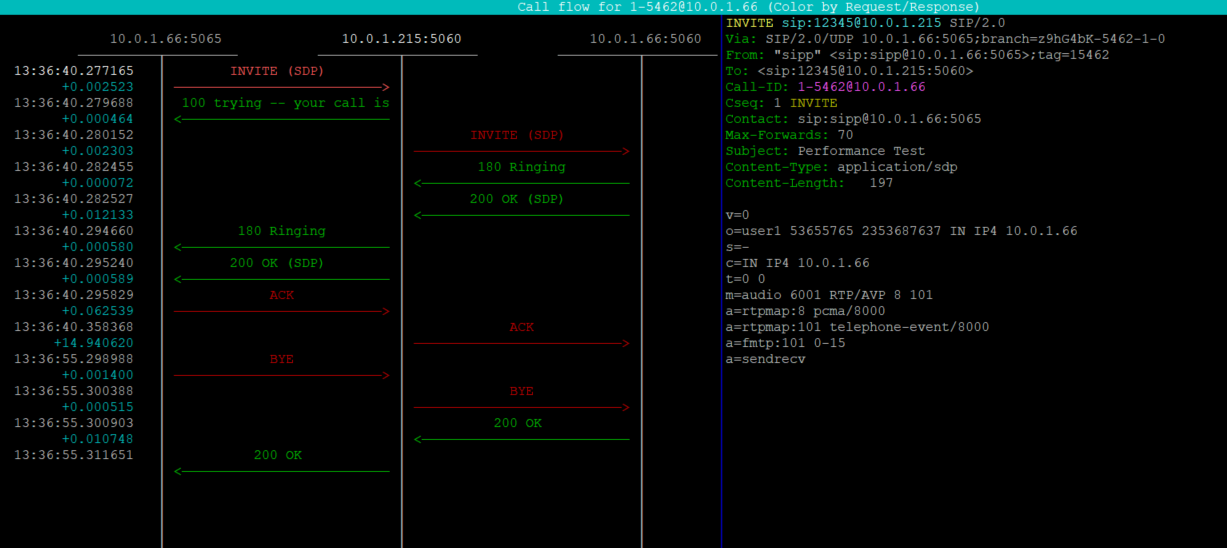Kamailio installation and configuration
Kamailio is an Open Source SIP Server released under the GPLv2+ license, able of handling thousands of call setups per second, fully supporting the SIP protocol defined in IETF RFC 3261, including the various annexes and addons. The main use of Kamailio is as a SIP Proxy for routing SIP messages, but several additional features are also supported and described on the official website at the link https://www.kamailio.org/w/. On the official documentation you will find the details of the various modules supported by the system, here instead we will briefly see how to install and configure Kamailio for handling SIP calls.
Install and start Kamailio
As setup environment we will use a CentOS 7 server.
yum install yum-utils
yum-config-manager --add-repo https://rpm.kamailio.org/centos/kamailio.repo
So let’s check the presence of the repository for Kamailio packages kamailio.repo in /etc/yum.repos.d
[kamailio]
name=Kamailio - latest - Packages for the Kamailio latest release
baseurl=https://rpm.kamailio.org/centos/$releasever/latest/$basearch/
enabled=1
metadata_expire=30d
repo_gpgcheck=0
gpgkey=https://rpm.kamailio.org/rpm-pub.key
type=rpm
skip_if_unavailable=True
...
...
Kamailio setup
yum install kamailio
Once installed, we will find the configuration files in /etc/kamailio (the configuration file is kamailio.cfg) and the unit file is already configured to start the service.
Log configuration
With the default configuration Kamailio will generate logs on the local0 facility, so for a correct management of the logs it is necessary to edit the file /etc/rsyslog.conf as follows:
Add the following line
#kamailio log
local0.* -/var/log/kamailio/kamailio.log
Disable writing log in the messages file
# Don't log private authentication messages!
*.info;mail.none;authpriv.none;cron.none;local0.none /var/log/messages
Configure log rotation adding file /etc/logrotate.d/kamailio
/var/log/kamailio/kamailio.log {
missingok
notifempty
size 50M
rotate 5
dateformat -%Y%m%d-%s
postrotate
/bin/kill -HUP `cat /var/run/syslogd.pid 2> /dev/null` 2> /dev/null || true
endscript
}
Finally, create the folder and file where the logs will be produced
mkdir -p /var/log/kamailio
touch /var/log/kamailio/kamailio.log
systemctl restart rsyslog
Now we can start Kamailio with its default configuration
systemctl start kamailio
Configuring Kamailio to rotate a received call
Suppose we want to configure the system to receive a call by a client to a specific number and rotate it to a destination server. In my case I used the sipp simulator both as a client and as a server (you can find here a short installation and configuration guide), starting two instances of sipp on the same machine, but on different ports, obviously. Going into more detail, my network topology is as follows:
- SIP Client: IP 10.0.1.66 port 5065
- Kamailio SIP Proxy: IP 10.0.1.215 port 5060
- SIP Server: IP 10.0.1.66 port 5060
In the configuration file /etc/kamailio/kamailio.cfg we add a comment to the line if (uri==myself) return; in the SIPOUT route otherwise Kamailio will not RELAY calls directed to itself
# Routing to foreign domains
route[SIPOUT] {
#if (uri==myself) return;
append_hf("P-Hint: outbound\r\n");
route(RELAY);
exit;
}
Then let’s add our routing rule inside the RELAY route
route[RELAY] {
# enable additional event routes for forwarded requests
# - serial forking, RTP relaying handling, a.s.o.
if (is_method("INVITE|BYE|SUBSCRIBE|UPDATE")) {
if(!t_is_set("branch_route")) t_on_branch("MANAGE_BRANCH");
}
if (is_method("INVITE|SUBSCRIBE|UPDATE")) {
if(!t_is_set("onreply_route")) t_on_reply("MANAGE_REPLY");
}
if (is_method("INVITE")) {
if(!t_is_set("failure_route")) t_on_failure("MANAGE_FAILURE");
}
if (is_method("INVITE")) {
if ($rU == "12345") {
if (!t_relay_to_udp("10.0.1.66","5060")) {
sl_reply_error();
}
}
}
else if (is_method("ACK")) {
t_relay();
}
else if (is_method("BYE")) {
t_relay();
}
else {
if (!t_relay()) {
sl_reply_error();
}
}
exit;
}
In particular we are intercepting the User part of the Request Uri (12345) present on the received INVITE and we are carrying out the relay to the server. The image below shows the entire call flow of the call between elements of our test environment. After changing the configuration you need to restart Kamailio.

The call flow was obtained using sngrep tool installed on the same machine where Kamailio is running.